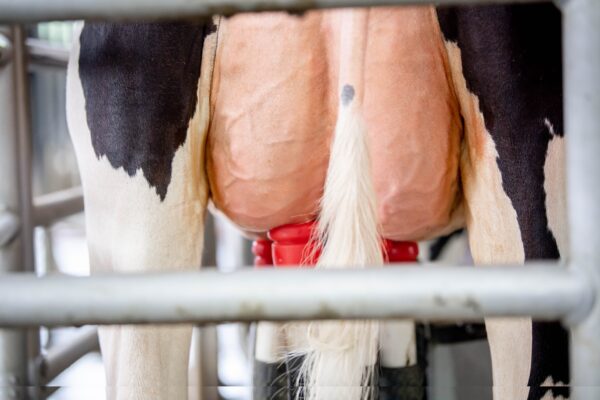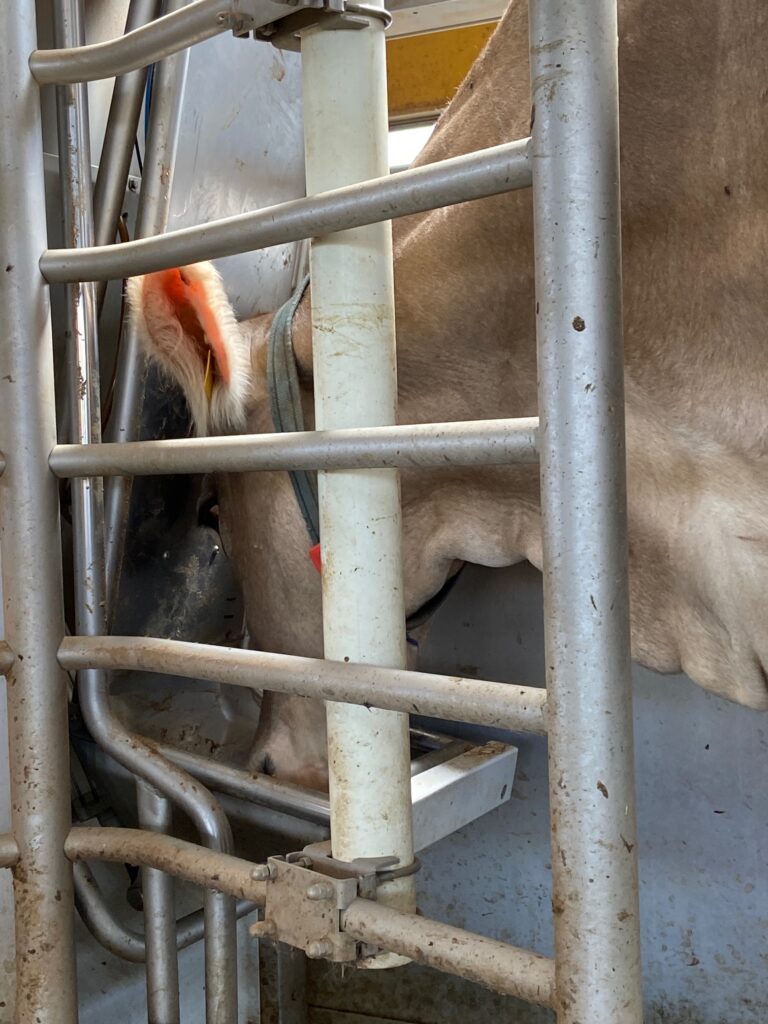In 2023, agriculture in Switzerland caused greenhouse gas emissions totaling 6.1 million tons of CO₂ equivalents. This corresponds to about 15% of total domestic emissions, which amounted to 40.8 million tons of CO₂ equivalents (BAFU). Agriculture is responsible for over 80% of methane emissions in Switzerland. According to estimates, dairy cows account for approximately 50% of total methane emissions from agriculture. From 2050 Switzerland aims to emit no more greenhouse gases into the atmosphere than can be captured and stored in natural and technological sinks (‘net-zero target’).To achieve this goal all possible levers must be set in motion.
Methane emissions from dairy cows can be reduced directly at the animal level – for example, through changes in feeding or the use of feed additives. While these measures allow for a quick reduction in emissions, they are not long-lasting: emissions return to their original level as soon as the additives are stopped.
In contrast, breeding methane-efficient animals offers a long-term and sustainable approach. Genetically more efficient animals remain efficient throughout their lives, and their offspring inherit these traits, leading to increased efficiency across generations. Studies from abroad show that the heritability of methane emission traits is moderate – comparable to other traits such as longevity or somatic cell count, which have already been successfully improved in internationally recognized breeding programs.
The Association of Swiss Cattle Breeders (ASR) developed its own strategy for reducing methane emissions in cattle breeding and launched the CH4COW project at the beginning of 2024.

Methane emissions can best be measured in milking robots (Picture: swissherdbook)
CH4COW project overview
The project focuses on the development of standardized methane phenotyping directly on commercial farms to establish a reference population for methane efficiency in Switzerland. This will be used to develop genetic evaluations.
- A total of 64 dairy farms – most of which have milking robots (AMS, automatic milking systems) – will have methane sensors (“sniffers”) installed.
- Half of the animals studied are Holstein, and the other half are Brown Swiss.
- On some of these farms, the sensors are right at the feeding station.
- ASR is coordinating the technical implementation on the farms.
- Qualitas AG is developing the data infrastructure, calculating the methane phenotypes, expanding its database, performing genetic analyses, and taking on project management
Financing
The total cost of the project is around CHF 1.5 million. Of this amount:
- slightly more than 50% is being covered by the Federal Office for Agriculture (FOAG).
- The remainder is financed by regional authorities (Cantons) and the ASR itself.

The sniffernose is placed in the feed bin of the milking robot (Picture: Beat Bapst)
Significance for Switzerland
CH4COW marks the starting point for a national breeding strategy to reduce methane emissions in the dairy industry and is in line with Switzerland’s climate target. In addition, the project provides a platform for future collaboration with other national and international projects – even beyond animal breeding. This demonstrates Swiss dairy breeding’s approach to taking responsibility and striving for innovative solutions to reduce greenhouse gas emissions.
Contact persons
- Beat Bapst (project manager), Qualitas AG – beat.bapst@qualitasag.ch
- Adrien Butty, Qualitas AG – adrien.butty@qualitasag.ch
- Timothée Neuenschwander, ASR/Holstein Switzerland – neuenschwander@holstein.ch

